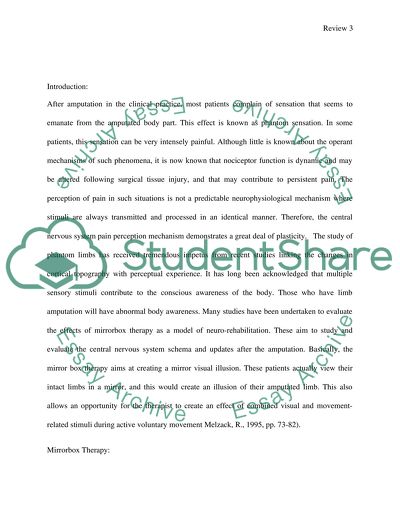Cite this document
(“Effectiveness of Mirror Box Therapy on Phantom Limb Pain Essay”, n.d.)
Effectiveness of Mirror Box Therapy on Phantom Limb Pain Essay. Retrieved from https://studentshare.org/health-sciences-medicine/1532447-systematic-review-on-the-effectiveness-of-mirrorbox-therapy-on-phantom-limb-pain
Effectiveness of Mirror Box Therapy on Phantom Limb Pain Essay. Retrieved from https://studentshare.org/health-sciences-medicine/1532447-systematic-review-on-the-effectiveness-of-mirrorbox-therapy-on-phantom-limb-pain
(Effectiveness of Mirror Box Therapy on Phantom Limb Pain Essay)
Effectiveness of Mirror Box Therapy on Phantom Limb Pain Essay. https://studentshare.org/health-sciences-medicine/1532447-systematic-review-on-the-effectiveness-of-mirrorbox-therapy-on-phantom-limb-pain.
Effectiveness of Mirror Box Therapy on Phantom Limb Pain Essay. https://studentshare.org/health-sciences-medicine/1532447-systematic-review-on-the-effectiveness-of-mirrorbox-therapy-on-phantom-limb-pain.
“Effectiveness of Mirror Box Therapy on Phantom Limb Pain Essay”, n.d. https://studentshare.org/health-sciences-medicine/1532447-systematic-review-on-the-effectiveness-of-mirrorbox-therapy-on-phantom-limb-pain.


